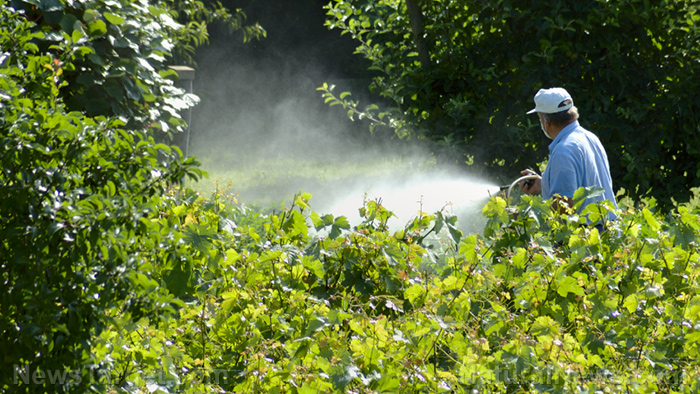Forever chemicals are also present in the air – study
09/06/2021 / By Mary Villareal

New studies show that toxic forever chemicals are present in the air we breathe.
New research developed a way to measure the presence of per- and polyfluorinated alkyl substances (PFAS) in indoor air and found these substances in several locations, such as kindergarten classrooms, offices, laboratories, and even in the home.
Food and water are known to be the major sources of PFAS exposure, but the study showed they are also present in indoor air, including dust.
PFAS are a class of more or less 9,000 chemicals that are used to improve stain, water, or heat resistance in different products. They are a cause of public health concern because they don’t break down in the environment. They also accumulate in animals and humans alike, and have been linked to several adverse health impacts such as cancer, birth defects, and immune suppression. (Related: Study: Rainwater in the Great Lakes contaminated with dangerous levels of “forever chemicals”.)
The authors of the study wanted to see if the chemicals were present in the air of indoor spaces where people spend most of their time. To find out, they affixed polyethylene sheet samplers to various spaces such as carpeted classrooms, offices, storage rooms, and even an elevator. They found PFAS in the air of almost every location they tested — with kindergarten and university classrooms having greater concentrations of airborne PFAS than storage rooms, even though products in these storage areas were actually treated with PFAS.
The researchers believe that PFAS actually end up in the air when compounds break off of treated products and attach to dust, or simply enter the air. The researchers also found that the indoor environments were especially contaminated with a specific kind of PFAS called fluorotelomer alcohols (FTOHs). While industry sources previously claimed that this compound was safe, it has been reported recently that it was toxic to lab animals. The chemicals also stayed in their systems longer than previously believed.

Tom Bruton, co-author of the study and Green Science Policy Institute senior scientist said that as long as PFAS are being used in products, everyone will be eating, drinking, and breathing the chemicals. “We need to turn off the tap and stop all unnecessary uses of PFAS as soon as possible,” he emphasized.
What do we need to know about PFAS?
PFAS are dubbed “forever chemicals” because they don’t have a natural breakdown process. They accumulate in humans and animals alike and are linked to different illnesses such as cancer, birth defects, liver disease, hormone disruption, decreased immunity and a slew of other serious health problems.
This class of chemicals is used to make products grease-proof, water-proof, stick-proof and stain-resistant. They are used in various everyday products such as food packaging, non-stick pans, carpets, rugs, textiles and car seats, stain-proof and waterproof clothing, outdoor gear and umbrellas, personal care products such as mascara and foundation, medical masks and equipment and more.
Very small doses of PFAS can increase the risk of a wide variety of health problems. While industries stopped manufacturing two of the most harmful PFAS chemicals in 2005, (PFOA and PFOS) they have already contaminated water systems, not only in the U.S., but around the globe.
People can be exposed to PFAS at different levels. For instance, people can be exposed to low levels of these chemicals through food, which can be contaminated through contaminated soil and water used to grow fruits and vegetables and food packaging. People can also be exposed to these chemicals through equipment that used PFAS during food processing.
They can also be found in drinking water, especially in communities where the chemicals already contaminated food supplies.
Learn more about toxic chemicals and their adverse effects on health at CancerCauses.news.
Sources include:
Tagged Under:





















